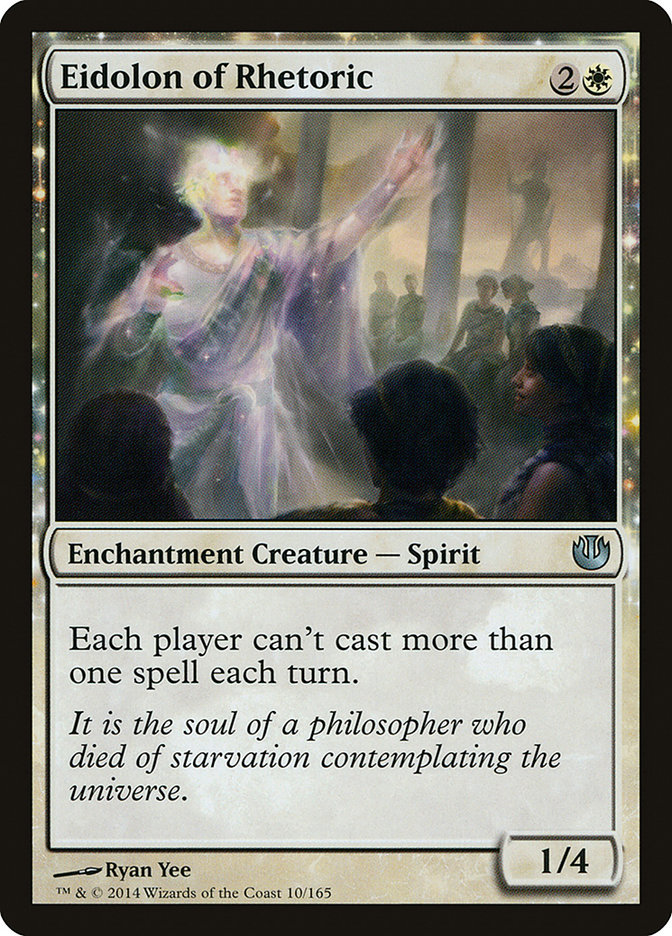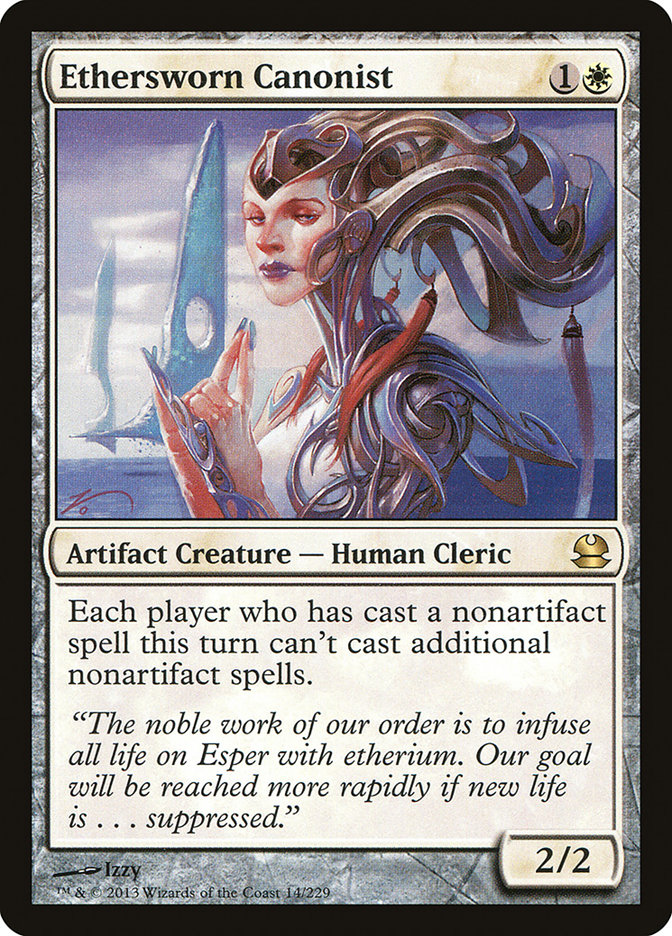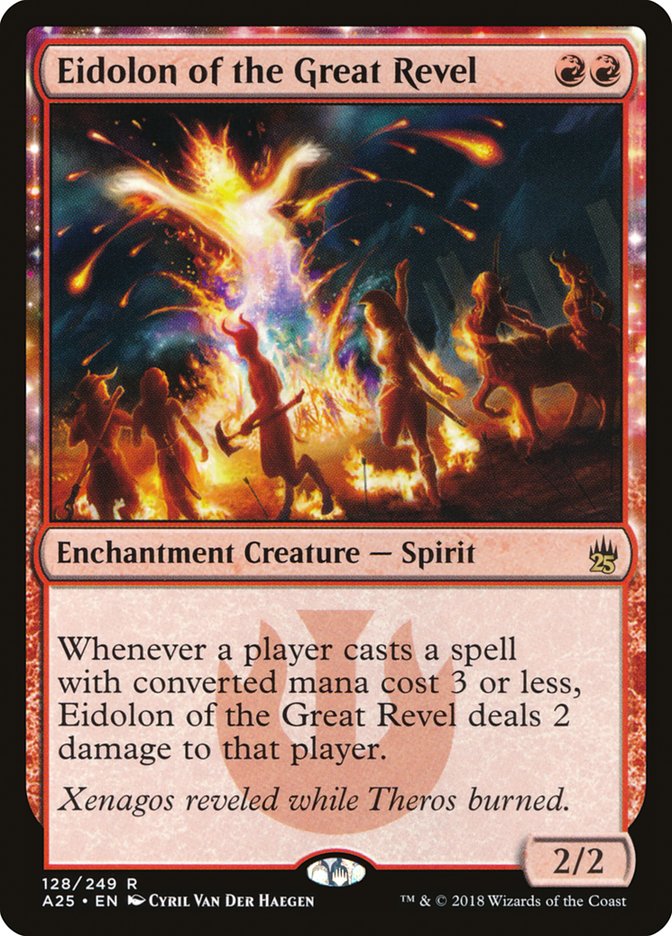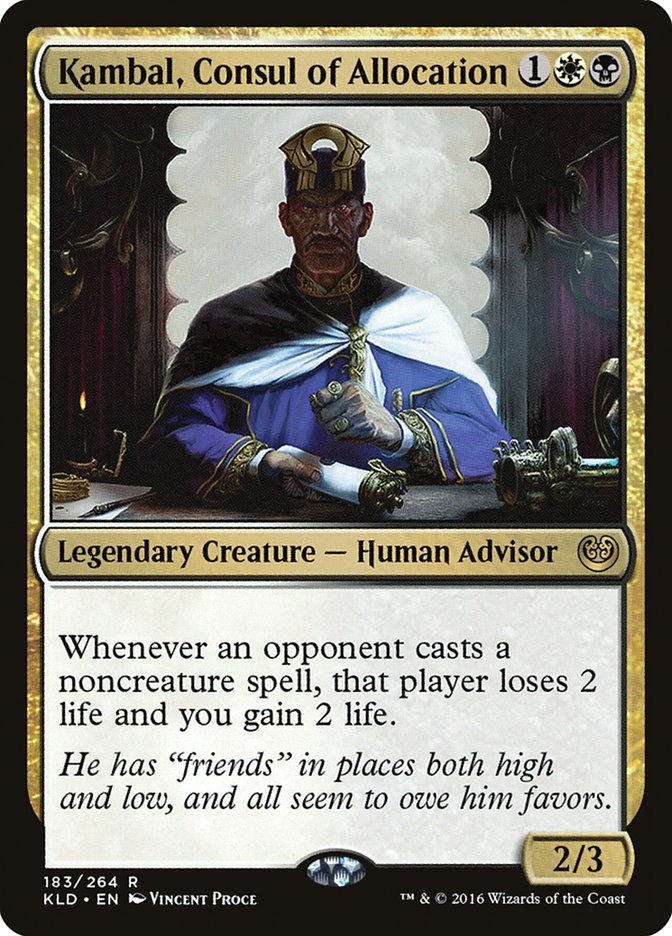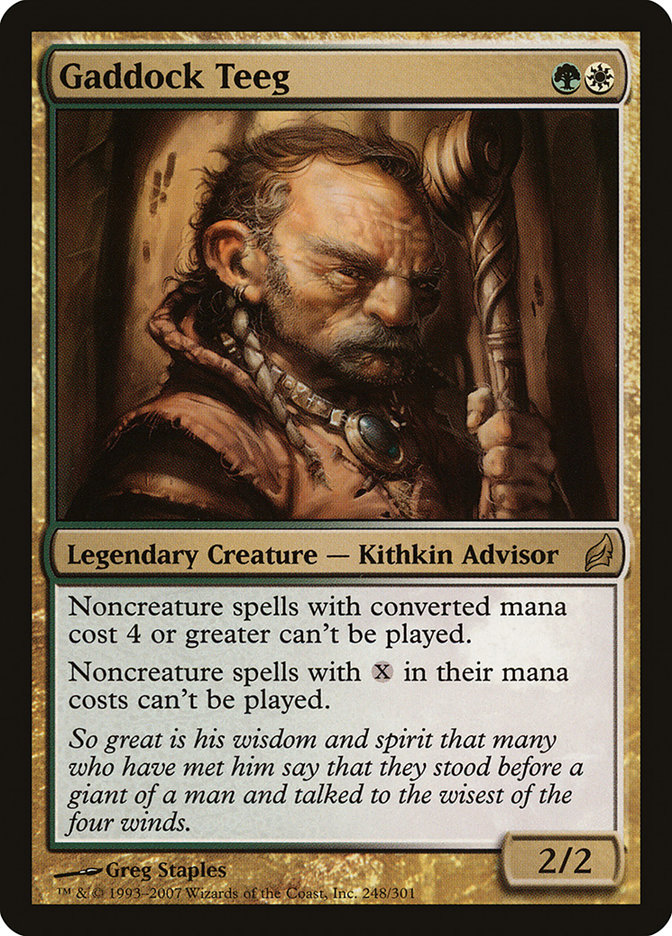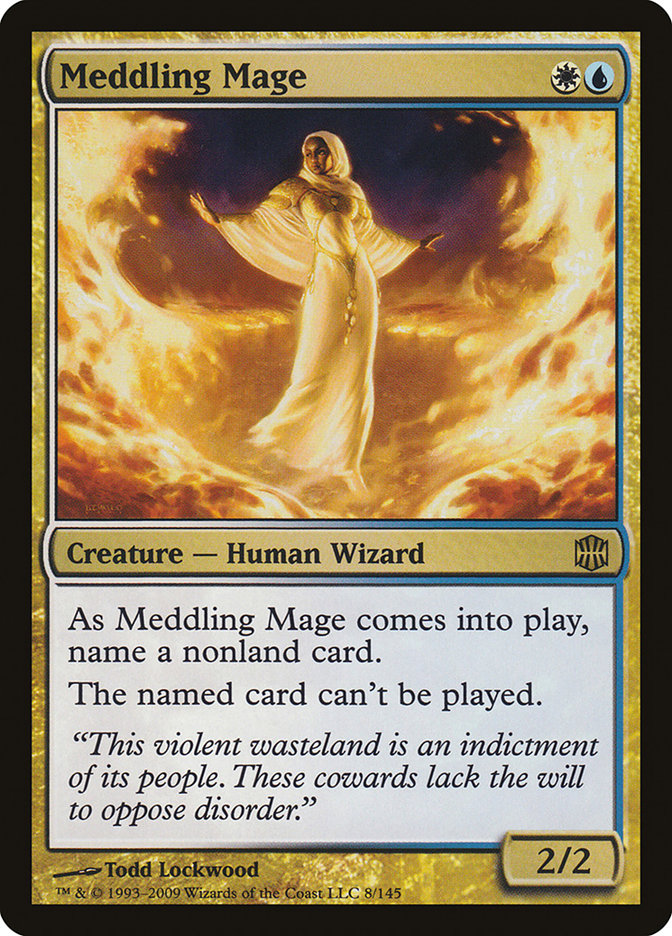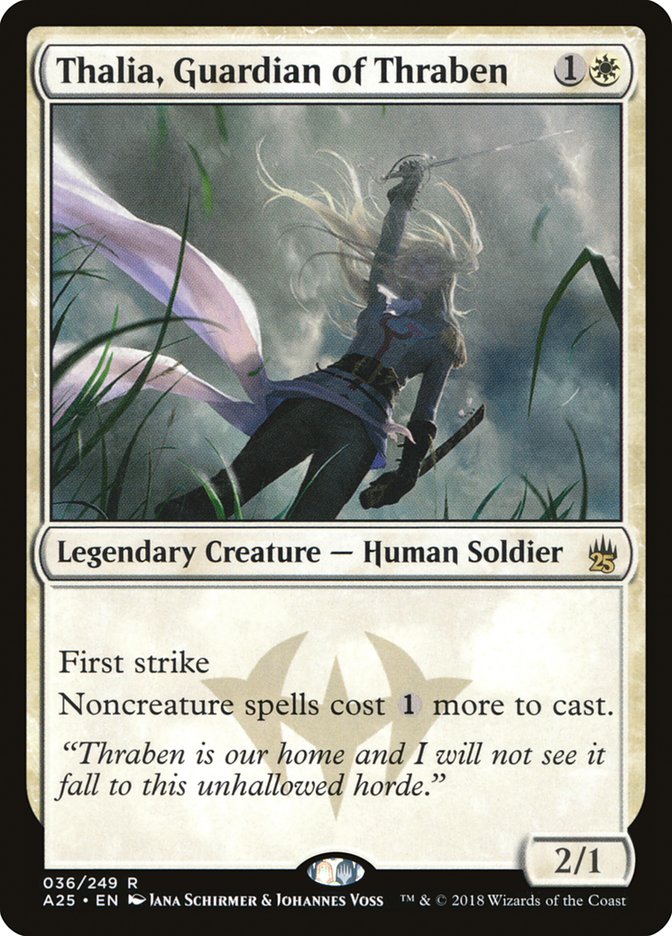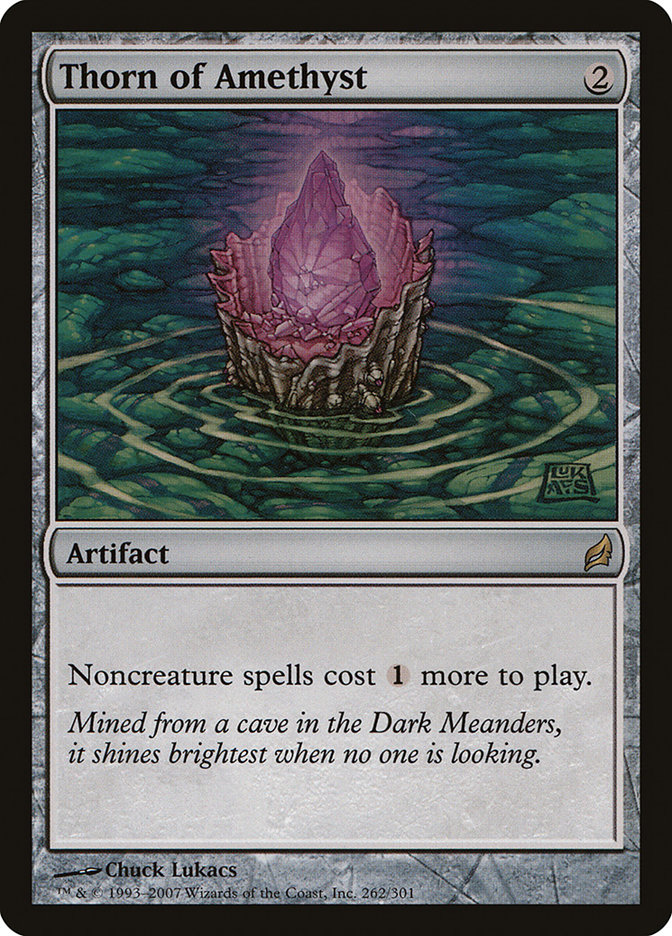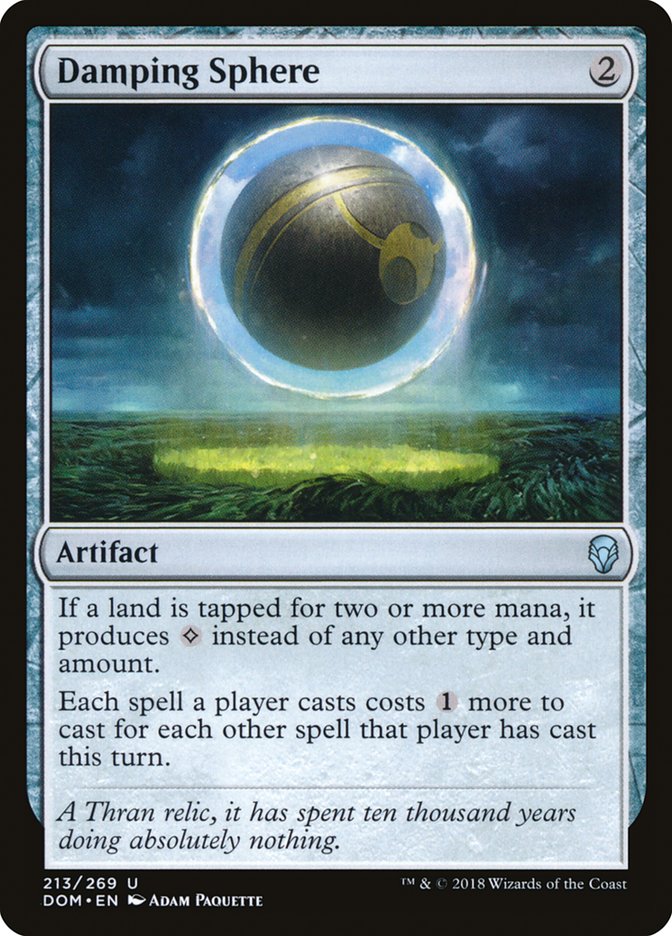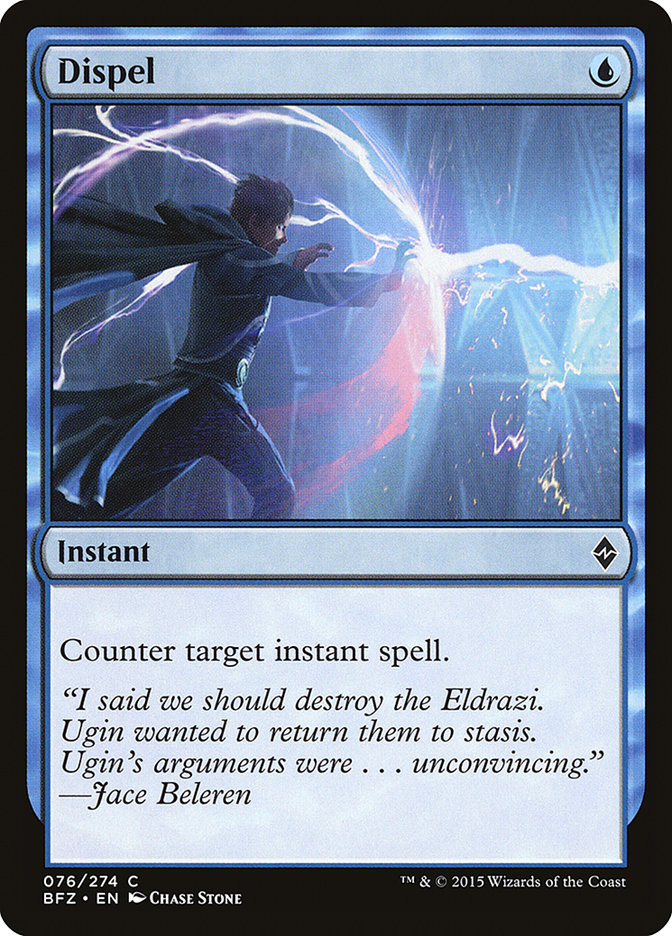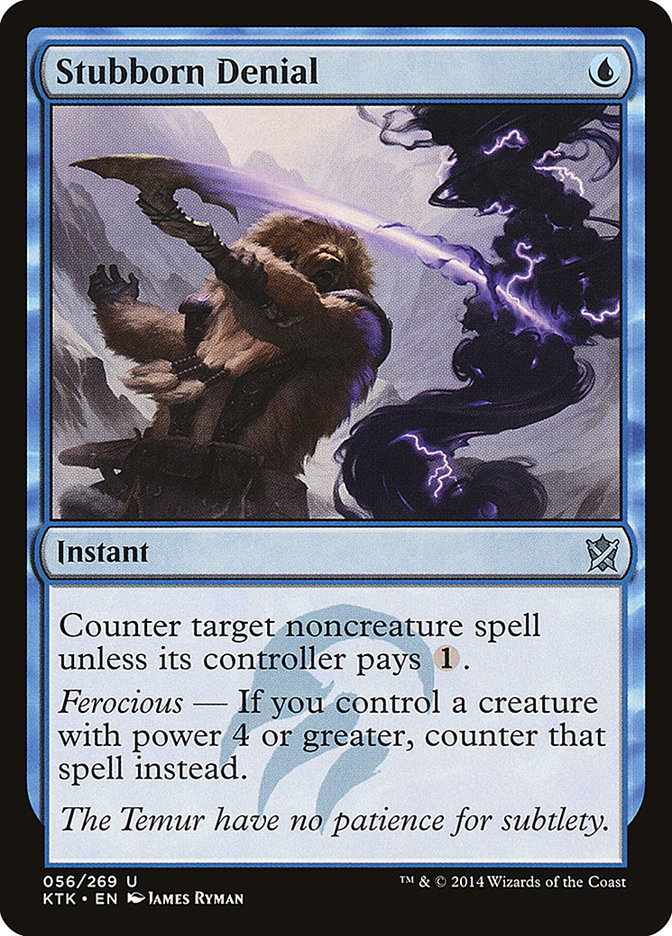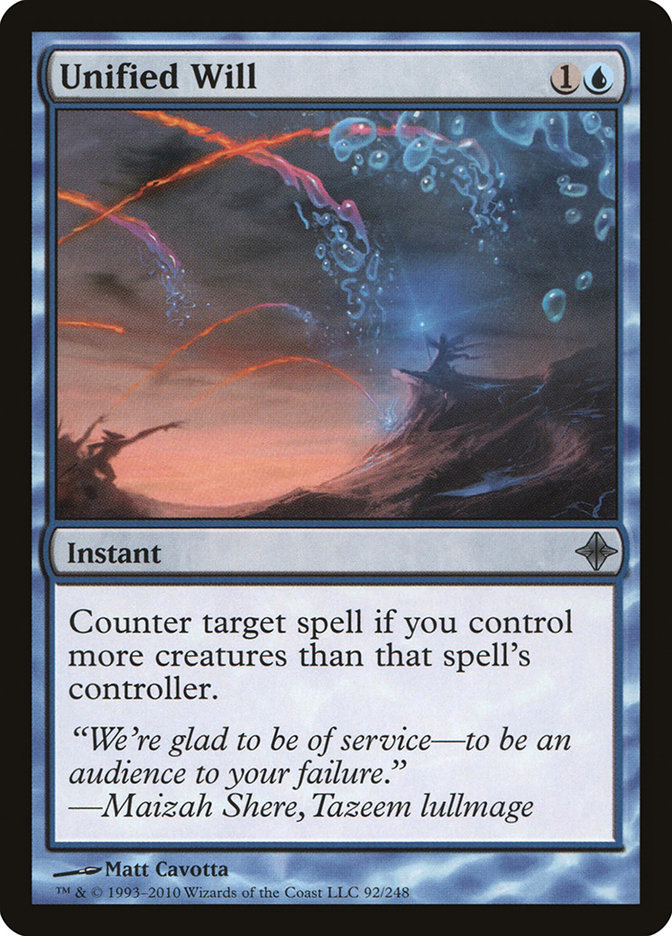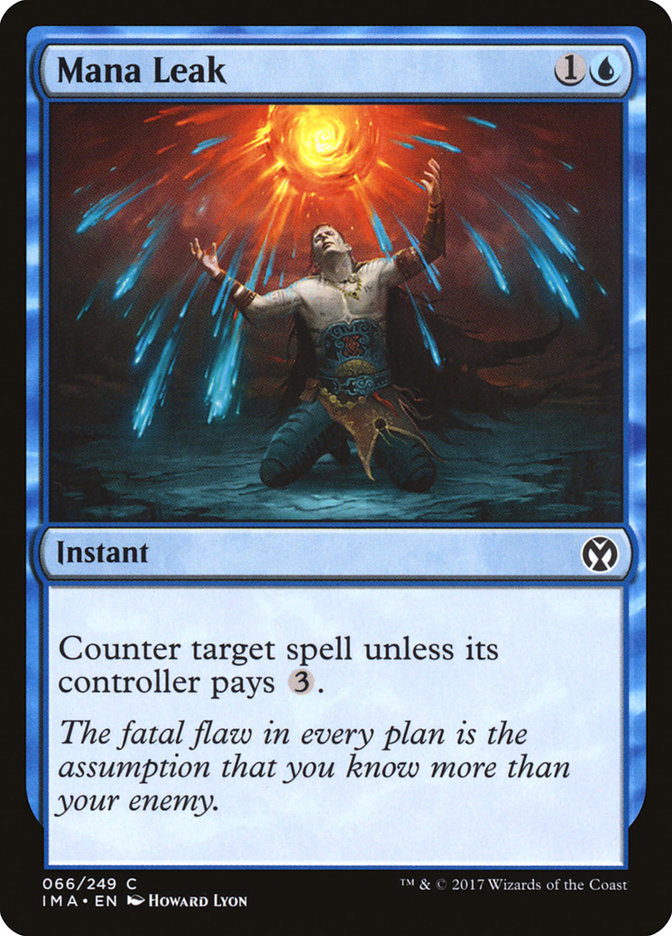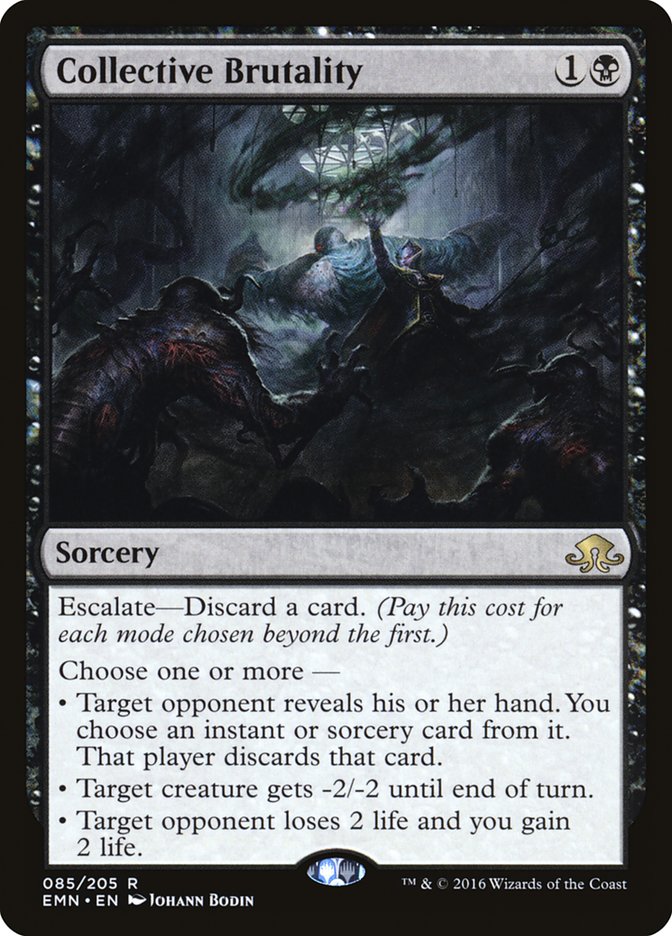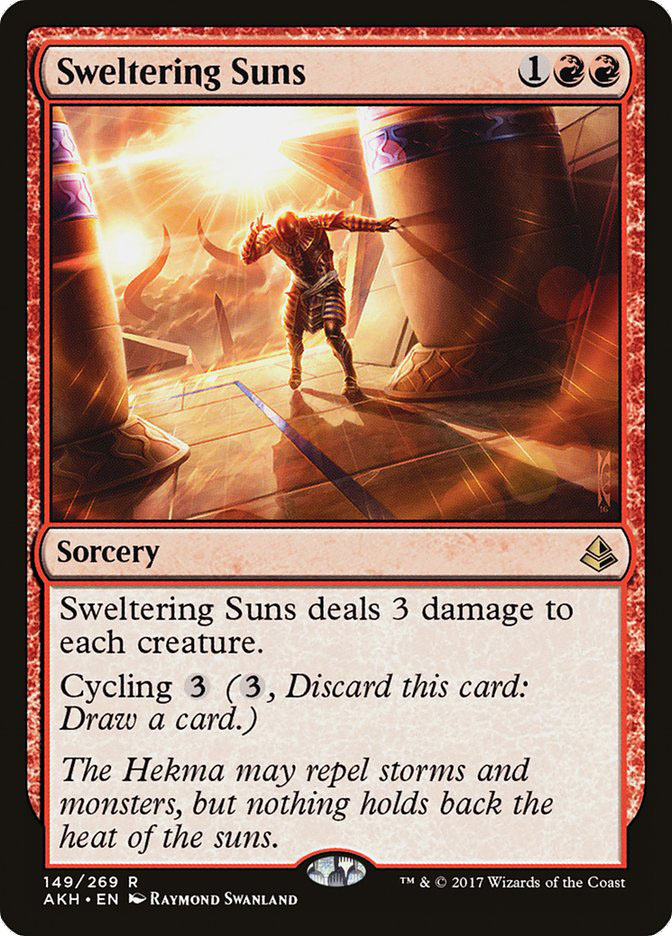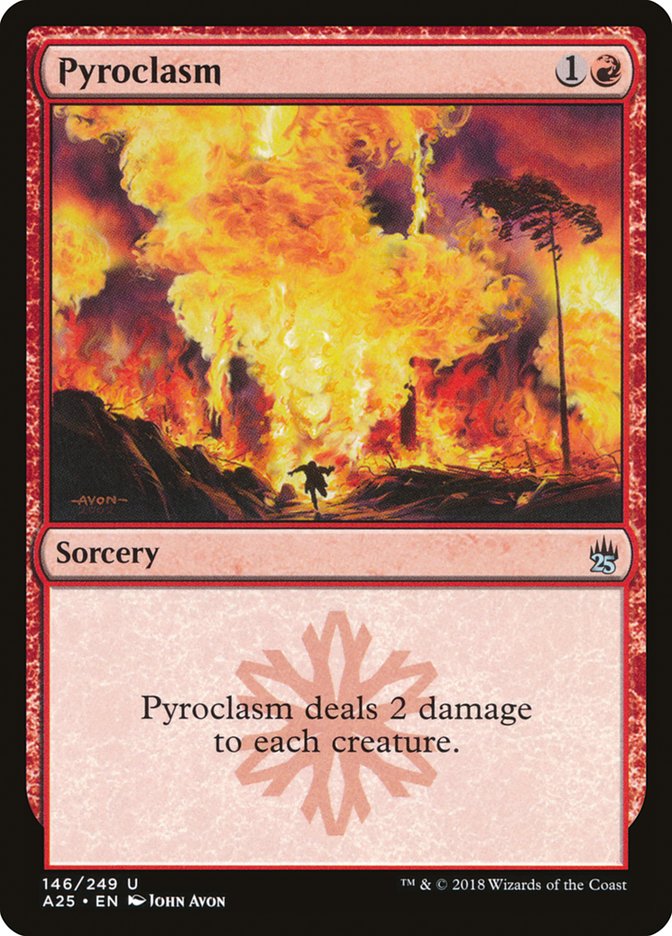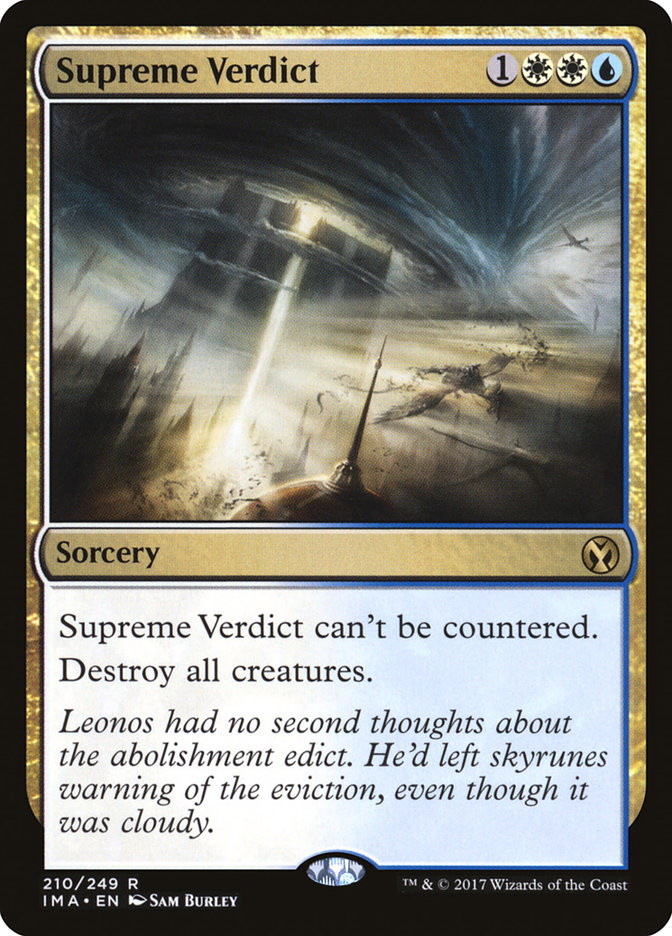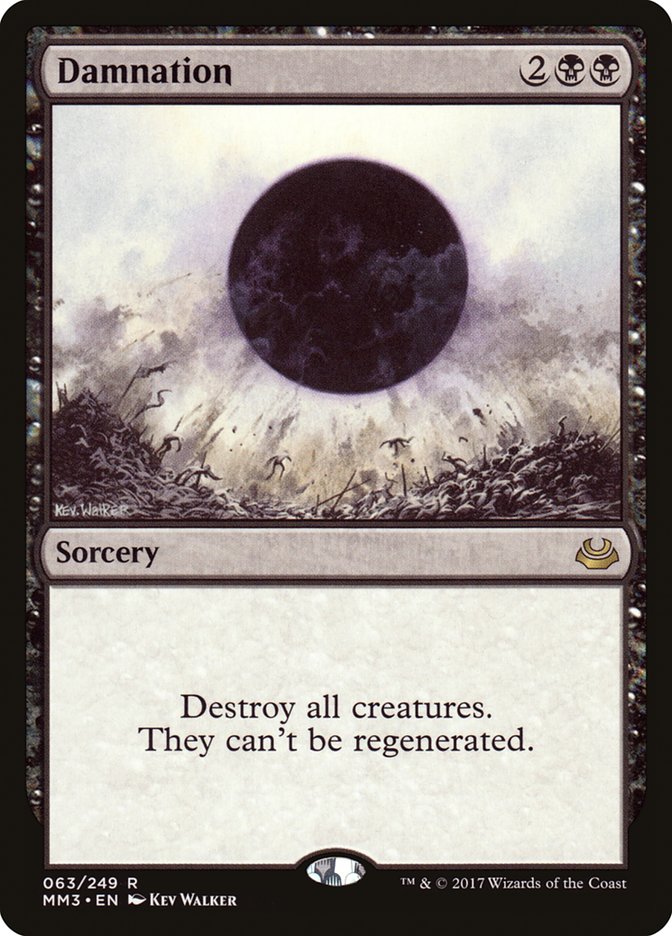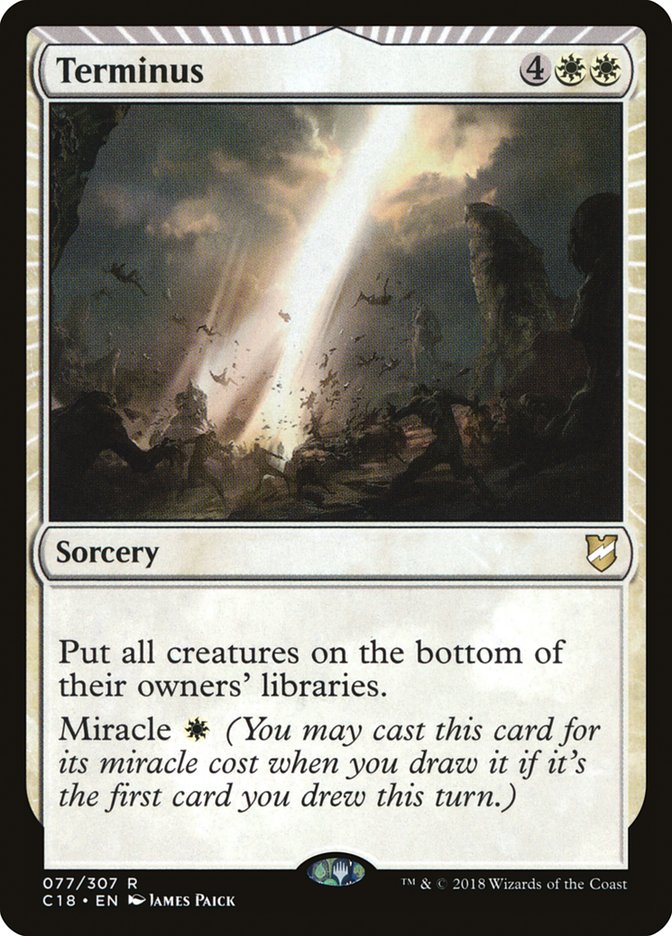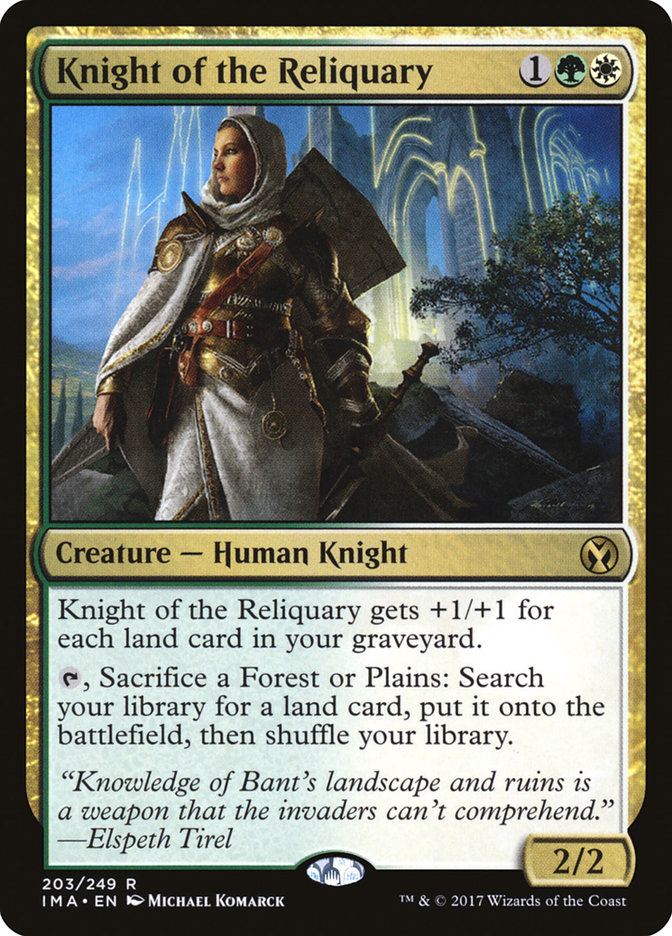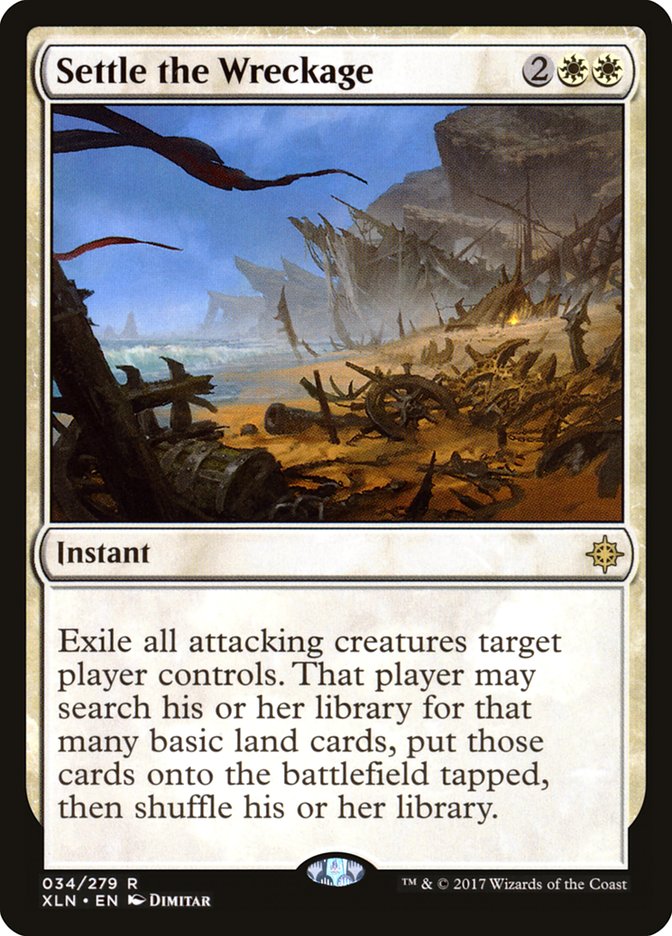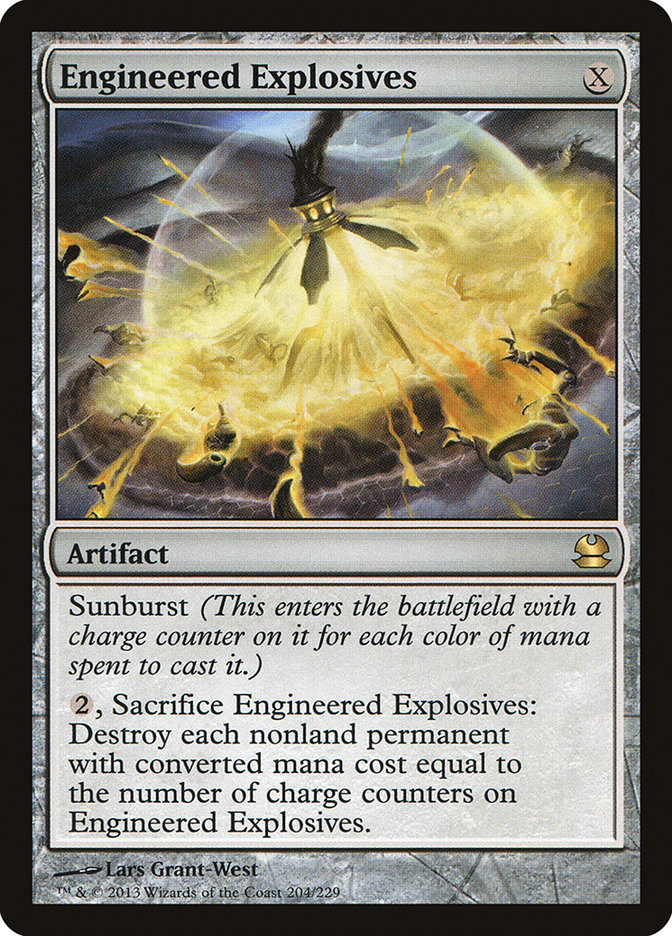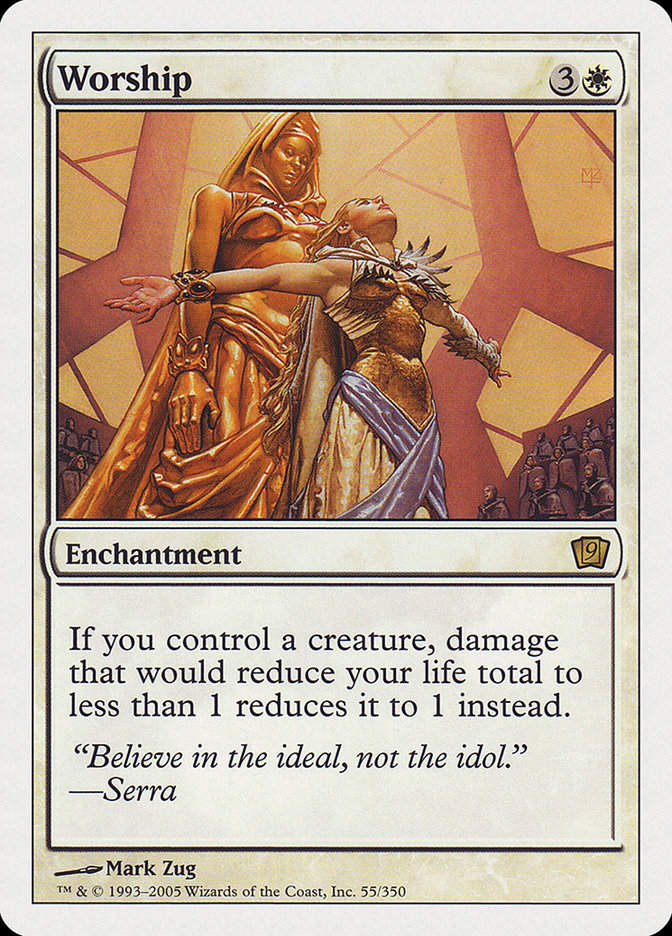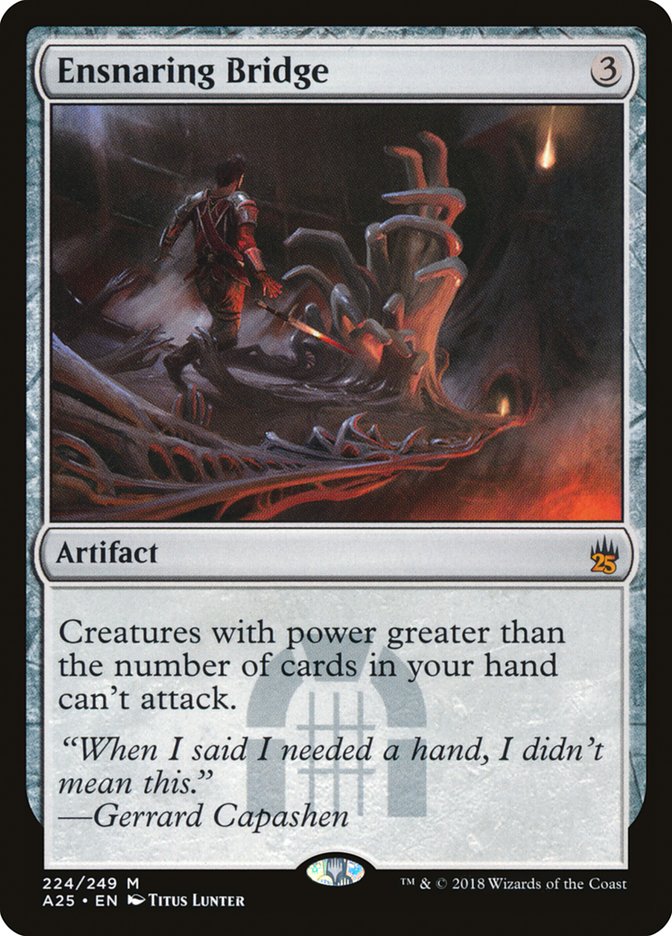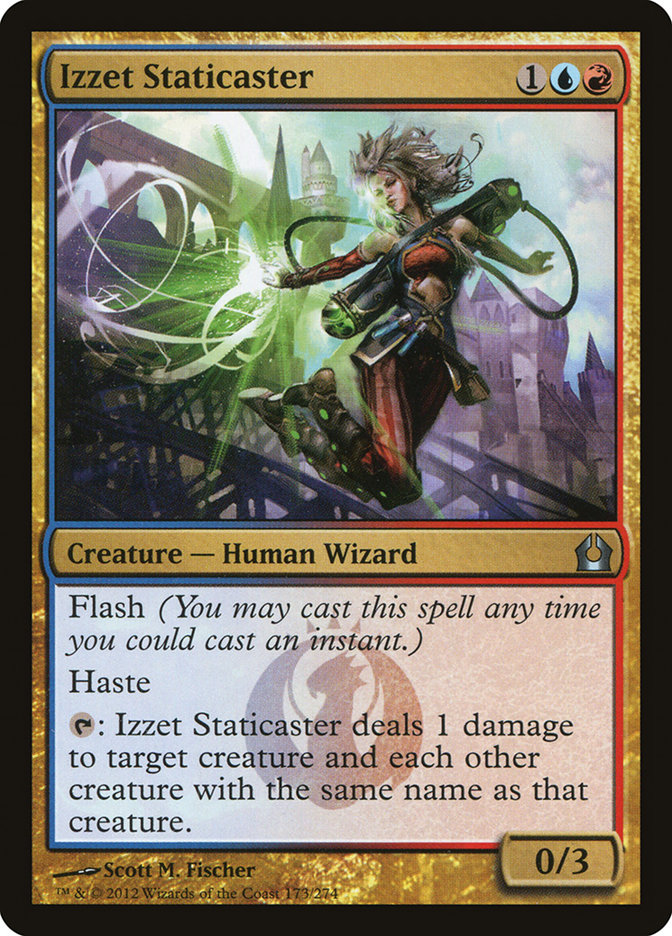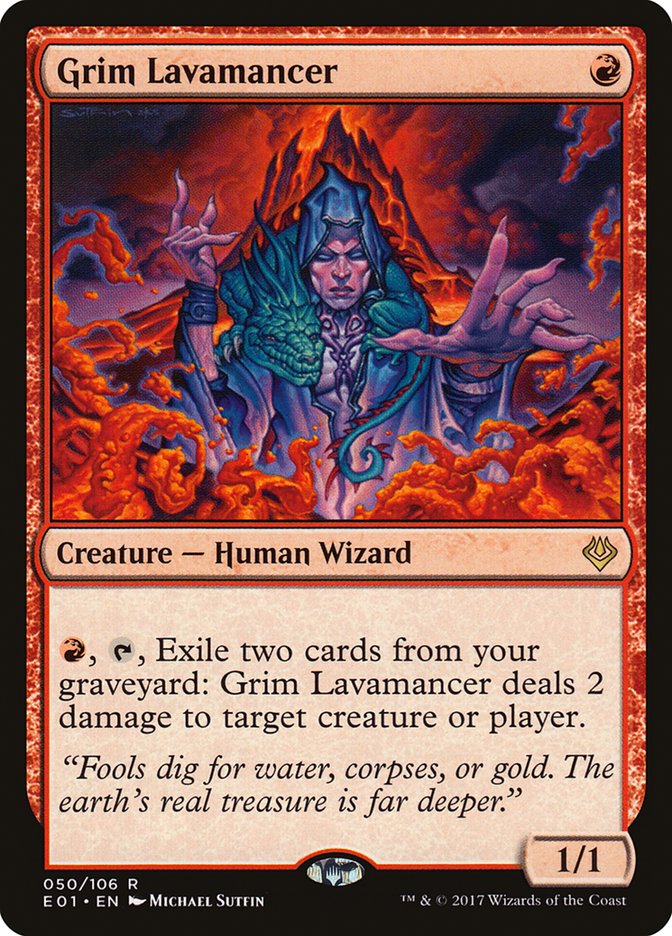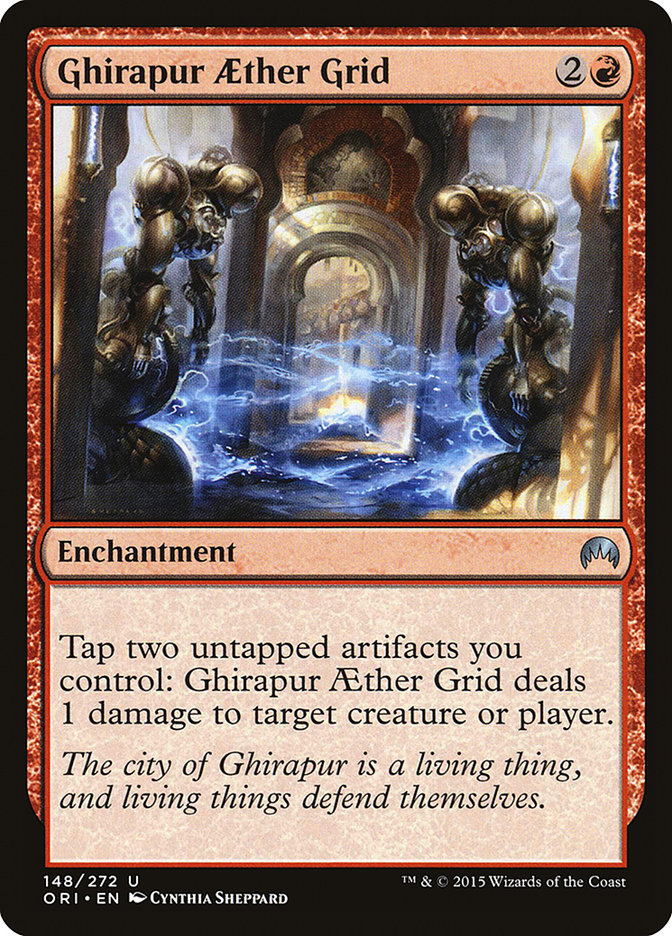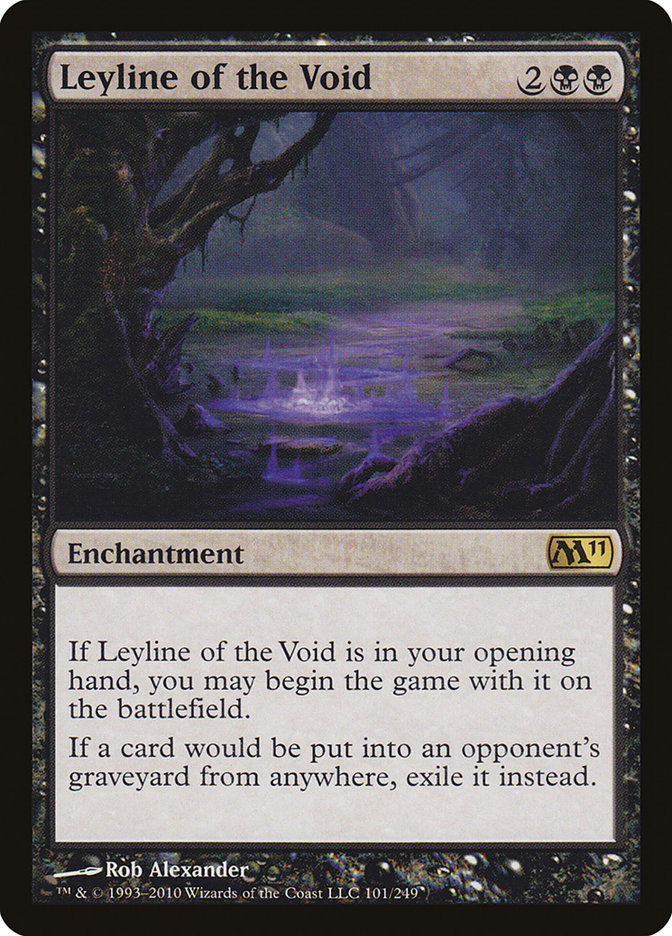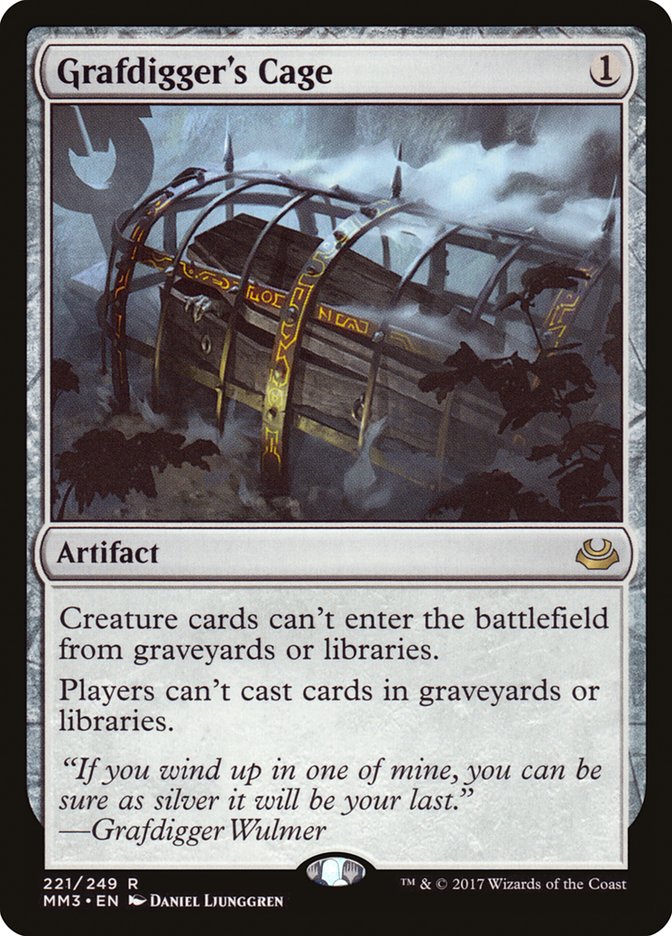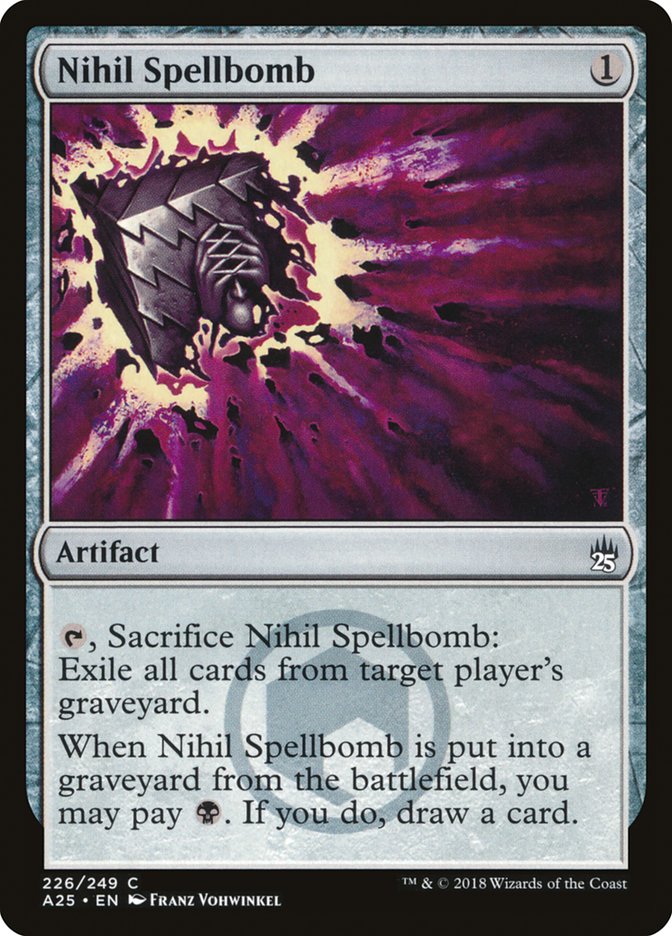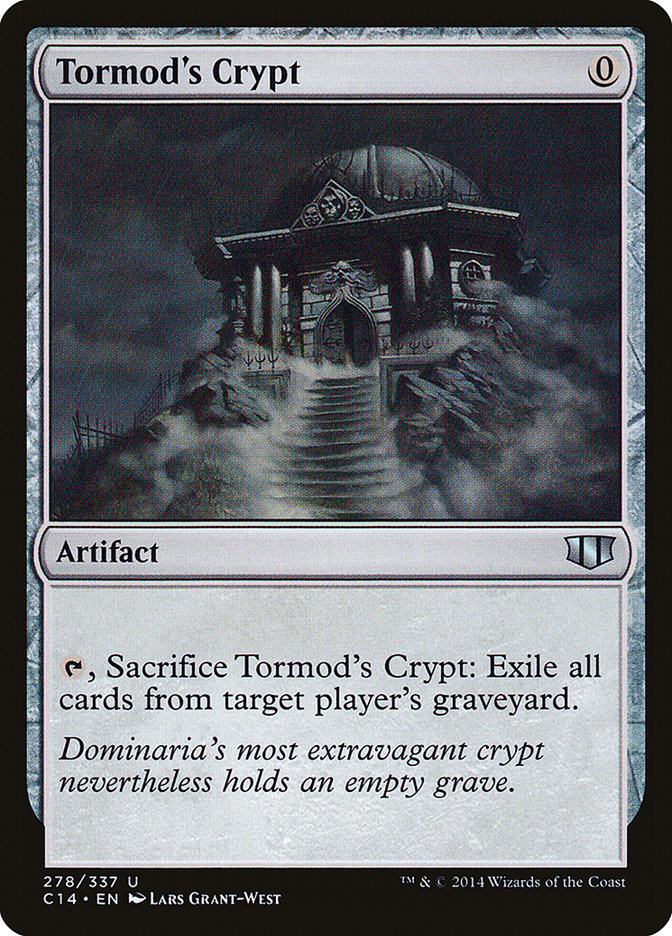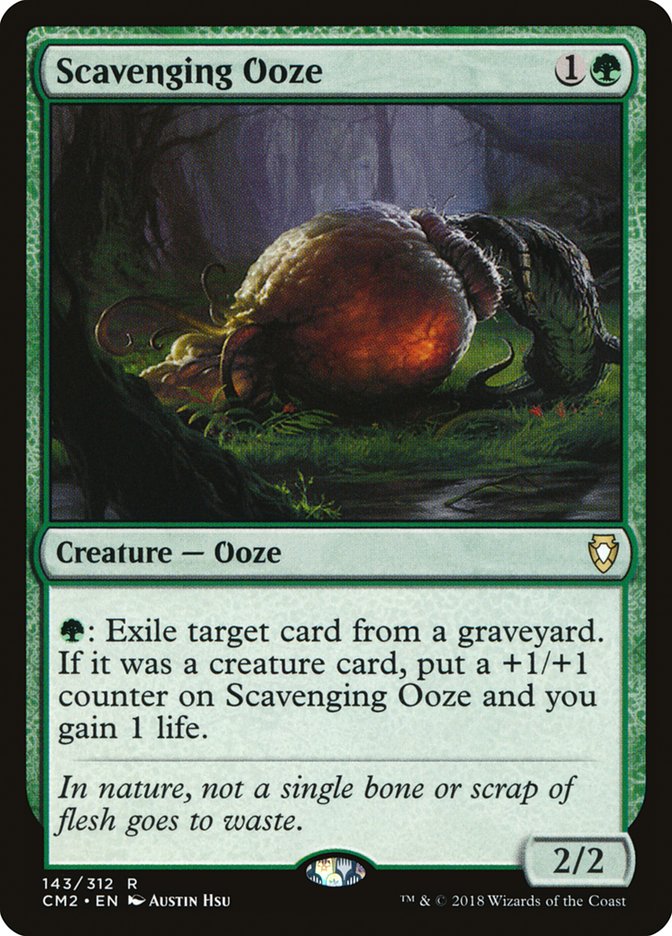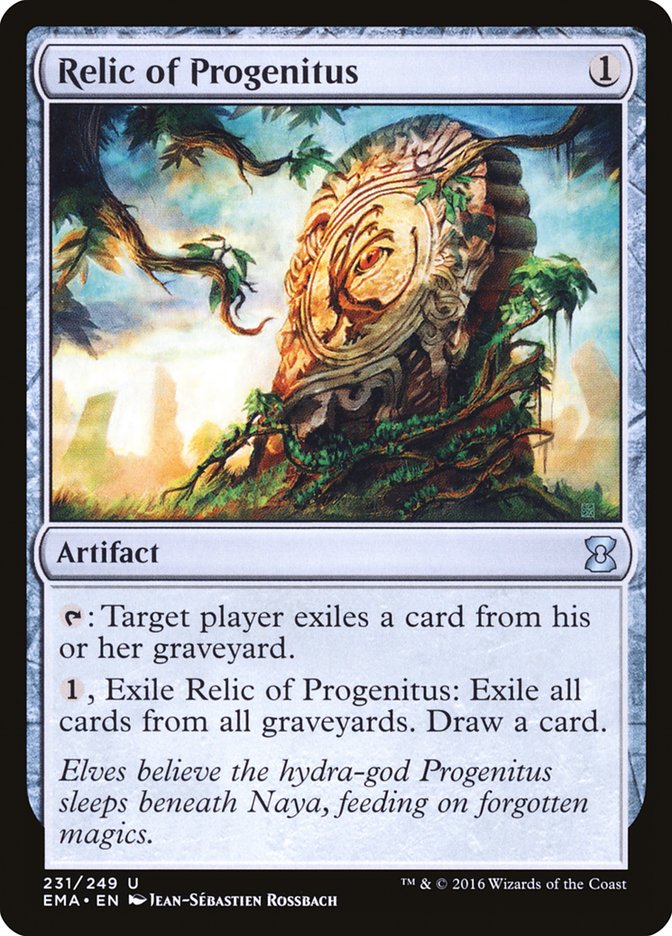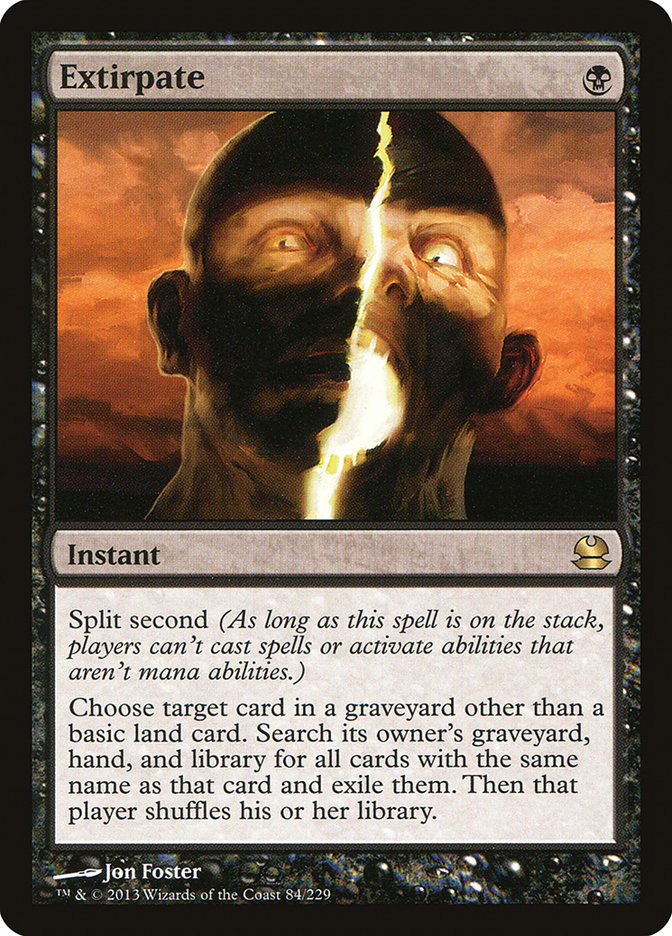If you’ve been paying attention to Modern, you know there are more linear
decks than just lands and artifacts even if Tron and Ironworks are the best
linear decks in the format. Spells, small creatures, and graveyards build a
lot of other degenerate strategies with their own specific hate cards.
Just wait… there’s more of this to come
Here’s that promised part two: the hate cards that cover spell-based combo,
small creatures, and graveyards in Modern.
Spells
The line on spell-based combo is a little weird in Modern. Usually it means
your opponent ignores the battlefield and wins via the stack, but the most
broken enablers for that all sit on the Banned List. These decks often need
a permanent or the graveyard and can’t just cast instants and sorceries to
win. The more defining aspect is “has to cast multiple spells a turn” with
a splash of “even if you answer their enabler permanent on sight they might
just go off over your removal.”
Creatures (6)
Lands (14)
Spells (40)

Creatures (8)
Lands (18)
Spells (34)

Creatures (5)
Lands (18)
Spells (37)

Creatures (15)
- 3 Kiki-Jiki, Mirror Breaker
- 2 Simian Spirit Guide
- 4 Deceiver Exarch
- 4 Griselbrand
- 2 Jace, Vryn's Prodigy
Lands (17)
Spells (28)

Creatures (27)
- 4 Simian Spirit Guide
- 4 Street Wraith
- 3 Faerie Macabre
- 4 Monstrous Carabid
- 4 Archfiend of Ifnir
- 4 Desert Cerodon
- 4 Horror of the Broken Lands
Lands (18)
Spells (15)
Sideboard

The Full Stops
Ineffective:
- Goryo’s Vengeance
- Ethersworn Canonist against Ironworks
If your opponent is trying to cast multiple spells in a turn, literally
stopping them from doing that is quite good.
But it goes beyond stopping your opponent from winning. Your opponent can
only cast one Chromatic Star or Serum Visions a turn to find their out.
This is key against Ironworks, where you need your hate card to shut down
their cantrip digging to a Nature’s Claim or Engineered Explosives.
Your opponent is going to try and kill these creatures, and at that point
their abilities can be a drawback. If you’re trying to protect your hate
card from instant removal with countermagic, you need to just sit and chip
away with what you have. Don’t even Collected Company until they have
spell-locked themselves.
Note: Ineffective might be too strong for these against Goryo’s Vengeance
decks, but they aren’t great. Your opponent’s fast mana is Simian Spirit
Guide, they will get to draw a bunch of cards off Griselbrand, and
Borborygmos Enraged still kills you. Emrakul, the Aeons Torn is another
possible short cut to one-spell death.
Weird Hate Bear One
Most Effective:
- Storm
Ineffective:
Eidolon of the Great Revel is really similar to the full stop hate bears.
Everyone knows Burn gets to maindeck it, but if any aggressive deck can
make double-red on turn 2 they might want it. Or Kambal, Consul of
Allocation if Orzhov mana is more your style.
These might be more effective than the hate cards that stop multiple
spells. The choice of churning through more spells is usually not a real
option, and the first spell costing life to cast often cuts the number of
things your opponent can do in a game more than if they were hard limited.
The only thing these cards don’t stop is Ad Nauseam combo. That deck is
literally built to disregard clocks on its life total, so these might as
well be blank. They’re also acceptable against Living End, but not really a
hard hate card. They can still combo off at the cost of four life, and
while Burn is just going to crush them for that, something like Mardu
Pyromancer isn’t going to get a raw game win off Kambal.
For the one or two decks that make six mana and have Summoner’s Pact, Ruric
Thar, the Unbowed is in this category. No one shrugs off a hit for six, but
sometimes that includes Ruric’s controller. It also must attack into
multiple Scrap Trawlers, which is one reason Matt Nass won a Grand Prix.
Weird Hate Bear Two
Most Effective:
- Ironworks
- Ad Nauseam
Ineffective:
Gaddock Teeg looks pretty darn good these days, but that isn’t always the
case. Storm used to be a Pyromancer Ascension deck and Teeg was a joke.
Gaddock Teeg is good when it utterly shuts down the opposing combo decks.
Right now it does that. Ironworks loses its kill condition and Engineered
Explosives. Storm loses Gifts Ungiven as a kill condition and as a way to
find outs to Gaddock Teeg. It doesn’t slow cantrips the way the other hate
bears do, so if it’s just shutting down their kill condition you want it to
be covering a fairly non-interactive deck. This is where Ad Nauseam loses
to it.
But give it a year, or even just a new set or two? Who knows. Gaddock Teeg
might go back to being a weird hate card that mostly hits Collected Company
and Supreme Verdict. Or combo might have a bunch of Lightning Bolts as
interaction. Watch the pulse of the metagame very closely when it comes to
putting this card in your deck.
Weird Hate Bear Three
Most Effective:
While that was nice, we’re a long ways from last October. Everyone knows
Meddling Mage is a threat and playing a deck that folds to it is just not a
thing you can do. While a Meddling Mage on Grapeshot or Krark-Clan
Ironworks halts those decks from winning, they have Unsubstantiate or
Engineered Explosives to fight back. You might be better off naming
something that cuts their development than the namesake finisher these
days.
The issue with Meddling Mage is that while it stops your opponent from
winning, it doesn’t stop them from doing stuff. Those Chromatic Stars and
Serum Visions are still firing off, getting them closer to the answer. The
decks it is best against are the lightest on answers and the worst at
finding them, but Living End still has Beast Within or Shriekmaw and Ad
Nauseam has a Slaughter Pact or weird Laboratory Maniac kills.
Meddling Mage is still fine, but it needs significant help to really win a
game.
A similar effect can be found in Slaughter Games, and honestly that might
be better now if you can cast it early. You can’t kill a Slaughter Games
with Pyrite Spellbomb. Those Krark-Clan Ironworks are just gone, and Scrap
Trawler beatdown is not a reliable gameplan.
Taxing Effects
Less Effective:
- Everything
Taxing effects are extremely effective in true Eternal formats, but Modern
isn’t very friendly to them. Storm is literally based around cards that
negate these. Ironworks has a clean answer that ignores these effects due
to the oddities of sunburst. Ad Nauseam has ways to just make more mana.
Thalia and company are fine, but at most they are minor nuisances and not a
standalone plan.
Now sounds like a good time to bring up Damping Sphere. It does a lot of
what Thalia and company are trying to do and can’t be negated by layered
Goblin Electromancers, but it isn’t one sided and is a little softer on
cantrips as the first one a turn is retail price. The not one-sided part is
a big issue if you’re trying to race the combo deck finding an answer, and
the fact it doesn’t have power and toughness like Thalia also sucks on this
front. It is okay, but it’s less uniquely powerful compared to the effect
it has on Tron and similar decks. Damping Sphere is good to save space, but
not the best option in either case. The rarely seen Trinisphere is in a
similar boat since it isn’t the same fast spell it is in Legacy or Vintage.
Most Effective:
- Storm
- Living End
Ineffective:
- Ironworks
- Goryo’s Vengeance
- Ad Nauseam
Chalice of the Void is the reverse of Gaddock Teeg. There have been times
it totally shut down combo, but these days aren’t them.
First of all, Chalice for one isn’t the default in Modern. Chalice for two
was the key number to lock Storm creatures, rituals, and many of their
bounce spells. Zero is the number for Living End. Chalice for one also
isn’t great against the fair decks of the format now that Grixis Death’s
Shadow is lower profile, so you see it in less maindecks and better hate
cards in more sideboards.
Why is Chalice of the Void bad against Ironworks? The same reason Thalia,
Guardian of Thraben is worse: Engineered Explosives is weird. You might be
able to Chalice for zero and one, but they can pay X as two colorless and
blow up both zero mana cost Chalice of the Void permanents.
Hard Counters
Less Effective:
- Ad Nauseam
- Storm
Now we step away from the “hate” cards to baseline interaction.
The key with countermagic is you must be willing to leave it up. That means
you have some clock under it or some inevitable plan to end the game
without dropping the shields, like Teferi, Hero of Dominaria or Vendilion
Clique. Sometimes both if you tap one mana for Death’s Shadow.
Storm is often able to shrug off a single hard counter. Its spells are all
interchangeable with the exception of the one with Flashback, which is its
own issue. Negate is a challenge, not a stopper.
Ad Nauseam has two plans to punish counters. One is that it has zero mana
countermagic at the ready, making one counter easy to break through and
multiples just mana intensive. The other is that it can execute its combo
at instant speed, killing in response to the flash creature or Teferi.
Goryo’s Vengeance has some of this, but lacks the backup fight and its
attackable via other angles.
Stubborn Denial is for all purposes a hard counter. If you can’t count on
it in this category, you shouldn’t play it.
Unified Will is a bit weirder. It’s a great counter, but it just randomly
fails a bit too often. Sometimes they have two Scrap Trawlers and a Pyrite
Spellbomb for your Noble Hierarch, or two Goblin Electromancers and a short
Grapeshot. In metagames lighter on creatures in the spell combo decks it
does work, but right now you will end up with 1U do nothing a bit too
often.
Soft Counters
Less Effective:
- Ad Nauseam
- Storm
Much of the same hard counter logic applies to soft counters.
The difference is you must have the clock. Waiting your opponent out with a
Spell Pierce doesn’t end well…usually.
I think people have cured themselves of the Spell Pierce midrange deck
plague these days, but you can’t have too many reminders. Even something
like Spirits is probably too slow; you want Spell Pierce with Kiln Fiend or
Blighted Agent.
Discard
Most Effective:
Ineffective:
- Ironworks
- Storm
- Living End
Discard is the answer you want to combo if they have one irreplaceable
piece you can easily attack. Ad Nauseam literally has four Ad Nauseam that
are hard to find more copies of if one is stripped, and Goryo’s Vengeance
hands often have a specific route they must go that one discard spell
stops.
Discard is worse if there’s a high density of the kill card. Living End is
fairly good against discard. Or if there isn’t a specific spell that
matters. Storm has a giant stack of weird interlocking pieces that discard
can’t bring to a full stop.
What about Ironworks? They have a limited number of Krark-Clan Ironworks,
but a lot of ways to get it back if they end up with it in the graveyard.
Thoughtseize just forces them to take an extra game action, not dig and
maybe miss.
Jim Davis
talked about the general state of Eldrazi in Modern last week,
but this specific interaction is one reason I really like Thought-Knot
Seer. It takes the Krark-Clan Ironworks and puts it in the exile zone where
they can’t return it. Against a 4/4 body and possibly some Reality Smasher
5/5s hastes, do they have time to fire off Inventors’ Fair? I doubt it.
Small Creature Linears
Creatures (37)
- 4 Meddling Mage
- 4 Noble Hierarch
- 4 Phantasmal Image
- 4 Champion of the Parish
- 3 Thalia, Guardian of Thraben
- 4 Mantis Rider
- 3 Reflector Mage
- 4 Thalia's Lieutenant
- 4 Kitesail Freebooter
- 3 Militia Bugler
Lands (19)
Spells (4)

Creatures (35)
- 4 Llanowar Elves
- 4 Heritage Druid
- 4 Nettle Sentinel
- 4 Elvish Archdruid
- 3 Ezuri, Renegade Leader
- 4 Elvish Mystic
- 4 Dwynen's Elite
- 4 Shaman of the Pack
- 4 Elvish Clancaller
Lands (14)
Spells (11)

Creatures (19)
Lands (18)
Spells (23)

Creatures (32)
- 2 Bloodghast
- 4 Goblin Bushwhacker
- 4 Vengevine
- 3 Viscera Seer
- 4 Gravecrawler
- 3 Hangarback Walker
- 4 Insolent Neonate
- 4 Walking Ballista
- 4 Stitcher's Supplier
Lands (17)
Spells (11)
Sideboard

Creatures (13)
Lands (21)
Spells (26)

Creatures (26)
- 4 Arcbound Ravager
- 4 Ornithopter
- 1 Master of Etherium
- 3 Steel Overseer
- 2 Memnite
- 3 Etched Champion
- 4 Signal Pest
- 4 Vault Skirge
- 1 Glint-Nest Crane
Lands (17)
Spells (17)

Holy crap that’s a lot of creature decks. I drew the line at anything
leaning on three-drops. If Lightning Bolt is bad but Dreadbore is good,
that’s just midrange.
You can also argue G/W Hexproof and Burn come close, but they have weird
enough stipulations I left them out.
One Mana Removal
Most Effective:
- Humans
- Infect
- Death’s Shadow Zoo
Least Effective:
- Elves
- Goblins
It’s weird to talk about Fatal Push like it’s a hate card, but then again
we did see six months where casting small creatures was a lost cause after
it unleashed Death’s Shadow.
See a trend in what these impact?
The more power sunk into an individual threat, the more it hurts to lose
it. Champion of the Parish or Glistener Elf dying is a problem as the rest
of your cards really care if those are lying around.
Elves and Goblins, on the other hand, just don’t care. Fatal Push against
Elves often leads to the Push player dying to stupid 1/1s and 2/2s.
Which leads to the next point: spot removal up the curve is a lost cause in
Modern. Elves is only the best deck at delivering mediocre beats, the rest
of these decks easily can do the same. You need to leverage something
bigger beyond your cheap hits. A sweeper, a big roadblock, or just winning
the game. That’s the effect you care about the potency of. Path to Exile is
always fine, but it won’t be what wins the game.
Damage Sweepers
Most Effective:
- Elves
- Goblins
Least Effective:
- Infect
- Death’s Shadow Zoo
The real reason you play these sweepers is that you’re a red deck. The
color pie matters a little more when it comes to removal.
But what about Jund, which has Damnation and Anger of the Gods and can cast
whichever?
Red removal is cheaper but smaller scope. If your opponent is flooding the
battlefield with irrelevant bodies, you can’t buy better, but the more you
want to Fatal Push something the worse it is. That generally puts Jund on
the Anger of the Gods side as a raw hate card, with Damnation being more
about breaking Knight of the Reliquary decks. Mardu Pyromancer is in a
similar boat.
Big Sweepers
Most Effective:
- Humans
Least Effective:
- Infect
- Supreme Verdict against Ezuri, Renegade Leader
As you creep up the curve with your sweepers, you need to be sure the
increased effectiveness is what you’re looking for. Against Humans that
might just be true, but few of these other decks are that way. It’s still
usually good to have a sweeper effect, but some of these decks are trying
to kill you before that. Supreme Verdict is not the card you want against
Glistener Elf and Inkmoth Nexus.
Usually, the reason to be playing Damnation is that you want to send a
bigger deck packing. None of these small creature decks are trying to dodge
Lightning Bolt, so they’re at best only slightly more insulated against
damage-based sweepers. But if your opponent is on Loxodon Smiters or Knight
of the Reliquary, then you want the real answer.
This is one reason I don’t like Settle the Wreckage in Modern that much.
The nonsense big creature decks are often able to maneuver or value around
it in various ways that they just can’t with a typical hard sweeper. If you
want to exile Bloodghasts be my guest, but that’s about all it is good for
these days.
The Other Sweeper
Most Effective:
- All of these
Engineered Explosives is a really powerful Magic card. That is all.
Okay, there’s a bit more. You really want to be able to set your Engineered
Explosives to two against Humans, which is a strike against Tarmogoyf. You
really want to be able to set Engineered Explosives to three in general, so
that’s a strike against two-color decks.
The only downside is that once you start setting Engineered Explosives for
two or three, you wonder why it isn’t just paying four mana for a real hard
sweeper. I like the card the least in true control as a result, but you can
see the power of splitting the cost and maximizing your mana in other
spots. Hollow One can drop some threats and an Engineered Explosives that
clears their way next turn, or Ironworks can wait until end step to ensure
a fresh Meddling Mage doesn’t interrupt them.
Lock Pieces
Most Effective:
- Ensnaring Bridge against Humans
- Worship against Humans and Goblins
Least Effective:
- Ensnaring Bridge against the other decks
- Worship against Affinity and Infect
Weird hate cards do exist for the general card type “creature,” but they
aren’t quite as smooth to cast and clean cut as for the other card types.
Ensnaring Bridge is actually much worse than you would expect against the
decks I’m discussing here. While it will eventually lock the game up,
unless your deck is literally Lantern Control, you aren’t getting hellbent
fast enough for it to do the job against non-Humans decks.
Worship, on the other hand, is great. None of these decks have enough
removal to actually clear multiple creatures and none of these decks have
weird life loss outs like Collective Brutality. Infect is the obvious
exception to winning via actual damage, but often Affinity can Inkmoth
Nexus you out. They’re also liable to have Ghirapur Aether Grid, which is
an actual way to kill every creature you cast.
Repeat Shots
Most Effective:
- Infect
- Elves
- Affinity
Least Effective:
- Death’s Shadow Zoo
If anything is close to an actual hate card for creatures, these repeated
pingers are it. Grim Lavamancer takes a bunch of fetchlands to work, but
beyond that there isn’t much finesse to winning the game. Just point,
click, repeat. Even Humans can struggle to beat these cards if removal
catches up to their first couple of threats.
Liliana, the Last Hope is probably the least powerful as the sorcery speed
activation can interact poorly with their Aether Vials and Collected
Company, but you’re playing that one because it’s also a Raise Dead
planeswalker.
Graveyard
Creatures (30)
- 4 Stinkweed Imp
- 4 Bloodghast
- 4 Vengevine
- 4 Gravecrawler
- 2 Lotleth Troll
- 4 Prized Amalgam
- 4 Insolent Neonate
- 4 Stitcher's Supplier
Lands (19)
Spells (11)

Creatures (24)
- 4 Street Wraith
- 4 Bloodghast
- 3 Gurmag Angler
- 4 Flamewake Phoenix
- 1 Tasigur, the Golden Fang
- 4 Flameblade Adept
- 4 Hollow One
Lands (16)
Spells (20)

Creatures (27)
- 4 Simian Spirit Guide
- 4 Street Wraith
- 3 Faerie Macabre
- 4 Monstrous Carabid
- 4 Archfiend of Ifnir
- 4 Desert Cerodon
- 4 Horror of the Broken Lands
Lands (18)
Spells (15)
Sideboard

Creatures (6)
Lands (14)
Spells (40)

Creatures (8)
Lands (18)
Spells (34)

Creatures (8)
Planeswalkers (2)
Lands (17)
Spells (33)

Hard Answers
Less Effective:
- Hollow One
- Living End
- Fair Decks
As with many categories, there are absolute answers here. If you really
don’t want to lose to graveyard decks, the tools are there.
The last “Less Effective” deck I listed is really the biggest reason to not
use these cards. While Leyline of the Void stops Bedlam Reveler, every
extra copy is a blank. Remember the days of Grixis Death’s Shadow last
year, where sometimes the double Rest in Peace draw took a 9/9 Death’s
Shadow to the face because it had two blanks. I would still want these
cards in those matchups, but I would be closer to the one Leyline gambit
than the full four.
Hollow One has similar backup plans and card filtering to get through but
is less able at interacting with opposing gameplans and finds itself in bad
races as opposed to lopsided attrition games.
Living End is the oddball. If you don’t care about creatures, Rest in Peace
is a safe bet, but otherwise Living End is still a sweeper. Lots of
creature decks find out the hard way that they also can’t beat eight Wraths
and some five mana 4/4s.
Creatures Only
Most Effective:
- Dredge
- Storm
Ineffective:
- Fair decks
- Living End
- Ironworks
Grafdigger’s Cage has two big edges as a hate card. One is the absoluteness
of the effect. Sometimes you want the closest thing to Rest in Peace or
Leyline of the Void without putting one of those in your deck. The other
edge is stopping Collected Company. Beyond that, the card is fairly narrow.
I get paid to regularly remind people that trying to Grafdigger’s Cage a
Living End is a bad idea. I would also like to be paid for reminding people
that Grafdigger’s Cage for Snapcaster Mage is also a bad idea. You’re
spending a card chasing their card advantage engine, which to them is
winning the fight. They can even Cryptic Command bounce if they really want
it. The only time this has worked is out of Lantern Control as an
incidental piece of the lock.
One Shot Exiles
Most Effective:
- Dredge
- Storm
The big story with one shot exiles is you’re providing the most fragile
effect for the cheapest rate. You aren’t expecting to crush your opponent
with a Nihil Spellbomb, just bridge a gap or buy a minute to win.
This makes them the best tools against decks trying to go under a bigger
effect. Dredge can present an army of creatures off Cathartic Reunion on
the play prior to Rest in Peace resolving. Tormod’s Crypt undercuts that.
Storm locks itself into a single choke point with Past in Flames that an
exile handles.
Some of these decks just plan bigger than that given time. Living End can
cycle more things in response. Ironworks can sacrifice more things to save
its key Scrap Trawler chain.
There’s some bleed on effectiveness versus fair matchup utility here. Nihil
Spellbomb is a nice medium as a card and an exile is good value, but one
mana is a good rate when hate is required. Remorseful Cleric is a weird
outlier here on the fast scale, but more things with power and toughness
are always welcome against Snapcaster Mage.
Slow and Steady
Most Effective:
- Fair Decks
- Living End
Least Effective:
- Dredge
- Gurmag Angler
The chip shot exile effects are slow. We’ve already established that’s a
liability by pointing out the need for faster answers. Relic of Progenitus
isn’t that much slower, but a mana to activate is still a cost.
The reason cards like Relic of Progenitus and Scavenging Ooze are good is
the value they provide in slower games. Relic of Progenitus threatens to
both whittle away graveyard value and turn into a real card if needed,
while Scavenging Ooze is just a huge threat that leads to awkward
Snapcaster Mage or Kolaghan’s Command scenarios.
Not every graveyard deck is graveyard flooded early enough to overcome
these either. Living End loses mana for every relevant card exiled from the
graveyard. You can catch some Dredge hands on the play with discard spell
into Scavenging Ooze, even if many are faster.
The big issue is that neither of these cards really manages delve. It’s too
easy to throw blank cards in your graveyard and outpace these “answers”
before slamming a Zombie Fish.
Precision Tools
Ineffective:
- Most things.
Surgical Extraction and Extirpate just aren’t good graveyard hate these
days. These decks all care about a bunch of different effects from the
graveyard, or just care about general cards in graveyard for delve or have
a workaround for these targeted effects.
The one good thing Surgical Extraction can do is turn a one-shot answer to
a specific thing into a full Slaughter Games. Your mileage of Surgical
Extraction against Ironworks is likely when you Thoughtseize them then
clear their Krark-Clan Ironworks and not when they can just sacrifice
something in response to recur the target. Remember: that’s a mana ability
there, they can trigger Scrap Trawler in response to your split second
Extirpate. Oops.
Sideboards are Fifteen Cards
So, what is the end takeaway?
Don’t put the wrong cards in your sideboard.
Use this guide to make sure you actually have some of the right heavy
hitters in each spot.
Don’t spew tournaments because you played a card that shouldn’t beat your
opponent, expected it to do so, and were disappointed when it didn’t.


